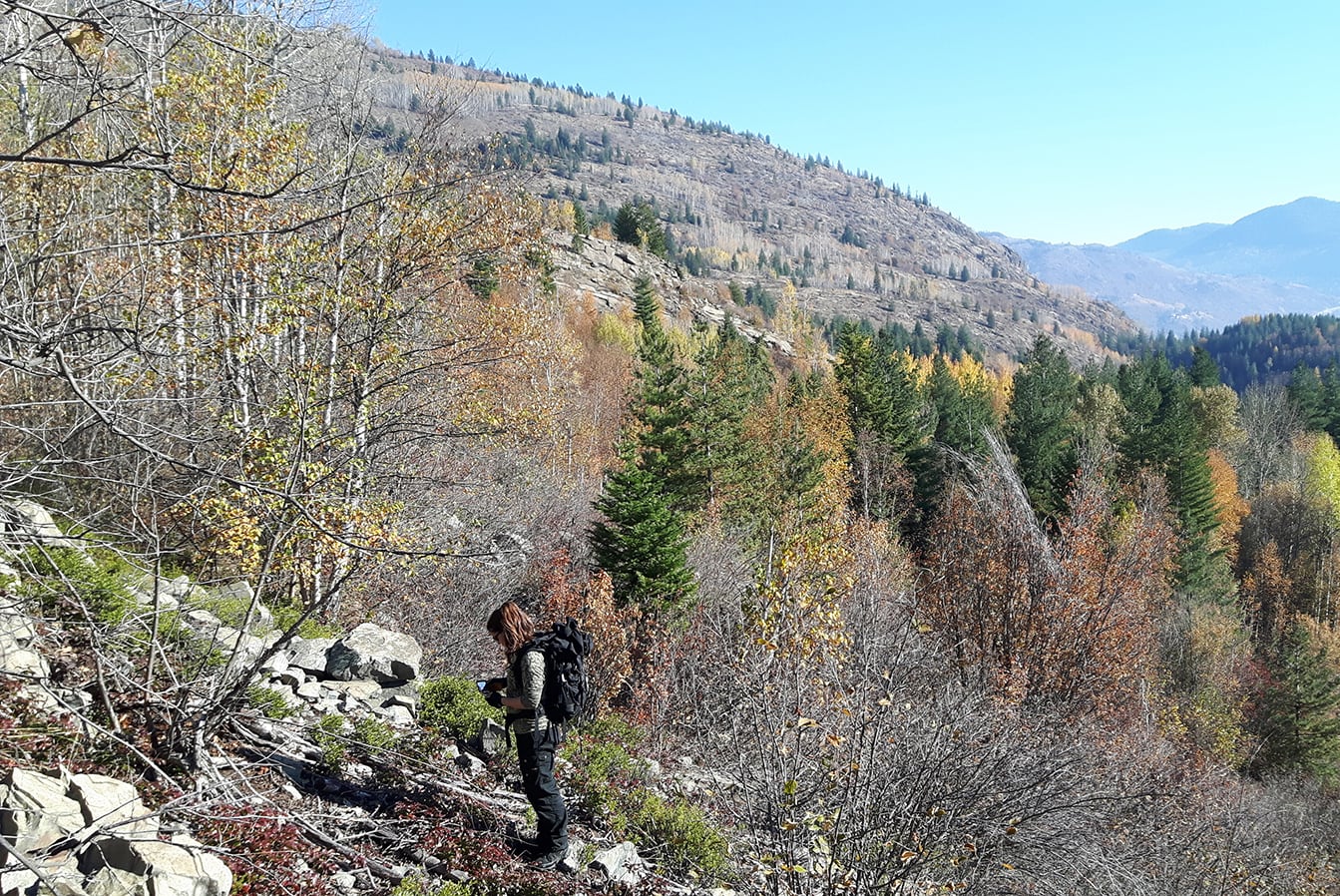New CBT projects support biodiversity, improve basin ecosystems
Columbia Basin Trust is providing $1.35 million to three new, large-scale projects that will improve ecosystems in the Elk Valley and Lower Columbia sub-regions, benefitting locally significant species including northern rubber boas, bull trout and Rocky Mountain elk among others, and their habitats.
The Ecosystem Enhancement Program is a five-year initiative that aims to maintain and improve ecological health and native biodiversity in the region through large-scale, on-the-ground projects with significant and measurable impacts.
“This program is a model for how we can focus on local priorities by working together with First Nations, regional environmental groups and community champions that have the knowledge and solutions to local ecological challenges in the Basin,” said Johnny Strilaeff, Columbia Basin Trust President and Chief Executive Officer.
“We are proud of the partnerships we’ve developed and we look forward to supporting these and more community-led projects to make a meaningful, long-term impact to our natural environments and the species that rely on them.”
Projects previously announced in the fall and spring of 2019 are working to restore over 5,000 hectares of habitat around Kootenay Lake, the southern Rocky Mountain Trench, Arrow/Slocan region and the Columbia Valley. The next round of projects from the North Columbia and Upper Columbia sub-region will be announced this spring.
The final intake of the program this year will support projects that take place throughout the Basin. Introductory online program information sessions will take place March 3 and 9. For more information on the program and intake, visit: ourtrust.org/ecosystems.
Broad Measures Target Rare Species and Ecosystems: $650,000
Thinning conifers will help improve habitat for birds and reptiles like Lewis’s woodpeckers, common nighthawks and northern rubber boas. Planting and armouring mature cottonwood trees will help protect valuable forests from human and beaver damage.
These are just a couple of the ways a five-year project is improving habitat for eight at-risk species within rare, sensitive and threatened ecosystems between South Slocan and the Pend d’Oreille River.
The project is a collaboration between the Okanagan Nation Alliance, Trail Wildlife Association and provincial Ministry of Forests, Lands, Natural Resource Operations and Rural Development.
“By increasing the productivity and resilience of these threatened ecosystems, the project aims to improve habitat availability and connectivity for wildlife across the region, especially for at-risk species,” said Yvonne Patterson, Wildlife Biologist, Okanagan Nation Alliance.
“Together with key partners, we will work to build awareness and support for ecosystem stewardship, plus collaborate with others in the community on actions that will benefit sensitive ecosystems and wildlife in the future.”

The Salmo Watershed Streamkeepers Society is planning improvements to enhance a critical ecosystem in the Salmo River, just north of the town of Salmo. — Submitted photo
Stream Improvements Aid Fish Habitat: $300,000
Placed just right, a boulder can redirect flow away from an eroding bank and create features like pools, riffles and scours that improve habitat for threatened aquatic species.
The Salmo Watershed Streamkeepers Society is planning improvements like this over three years to enhance a critical ecosystem in the Salmo River, just north of the town of Salmo.
Other activities will include restoring approximately 245 metres of a former side channel, protecting old-growth cedar trees and encouraging the growth of native plants like cottonwood.
“Human activities have left a simplified ecosystem, while bank erosion threatens key habitat features, degrades water quality and widens the channel, which raises water temperature,” said Gerry Nellestijn, Coordinator with the Salmo Watershed Streamkeepers Society.
“We look forward to proceeding with this project to address both erosion and simplified habitat. This will help us obtain our long-term vision of restoring the Salmo River watershed and increasing aquatic biodiversity.”
Elk Conservation Area Gets a Boost: $400,000
Opening forest canopy and promoting vegetation growth are both vital steps in enhancing 296 hectares of forest, grassland and wetland ecosystems at the Big Ranch Conservation Property Complex for Rocky mountain elk and other species. Big Ranch is owned by The Nature Trust of BC and is located between Elkford and Sparwood.
The five-year project, led by the Sparwood and District Fish and Wildlife Association, involves activities such as removing trees to allow light to reach the understory, fertilizing grasses and treating invasive weeds. Other steps include creating wildlife trees, repairing a wetland complex and planting trees in some areas to create visual buffers between humans and wildlife.
“Land-use changes and a fragmented landscape have harmed critical habitat required to support thriving wildlife populations in the Elk Valley,” said Matt Huryn, President of the Sparwood and District Fish and Wildlife Association.
“This project will help reverse the impacts as the property returns to its natural state as a forest-grassland corridor, increasing winter range and restoring grassland ecosystems for the benefit of elk and species-at-risk.”
Columbia Basin Trust supports the ideas and efforts of the people in the Columbia Basin. To learn more about the Trust’s programs and initiatives, and how it helps deliver social, economic and environmental benefits to the Basin, visit ourtrust.org.


























